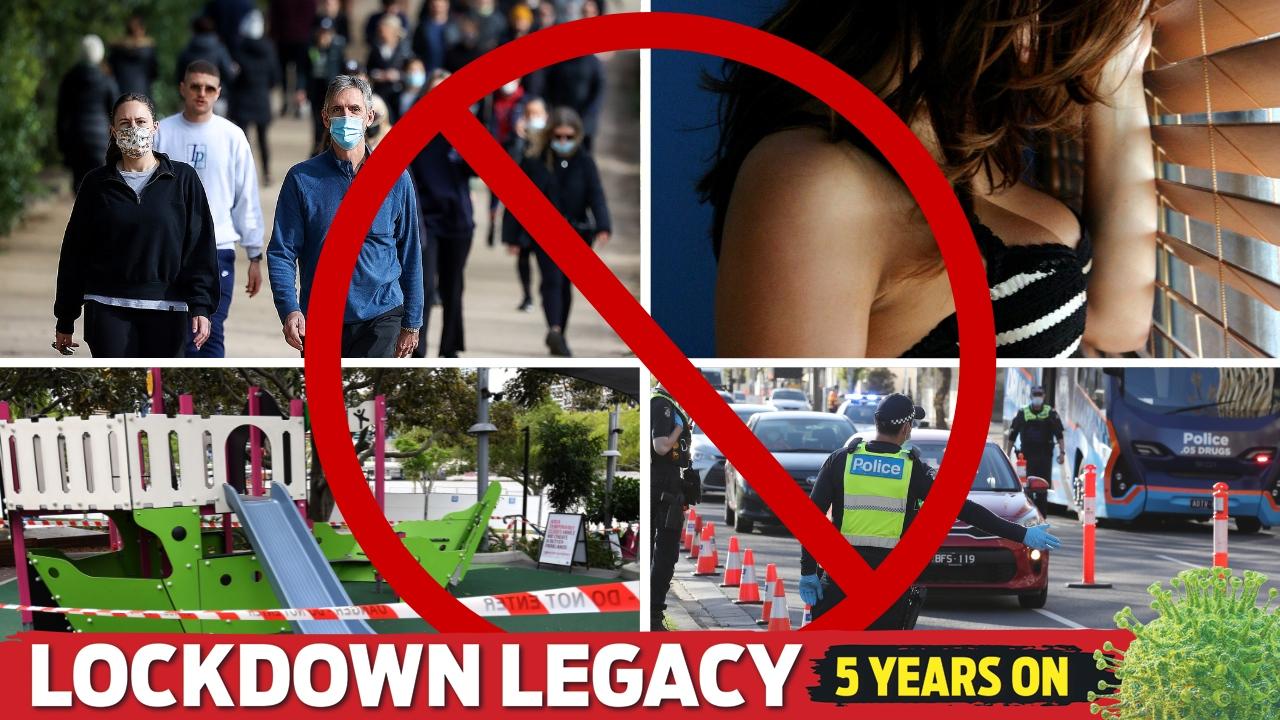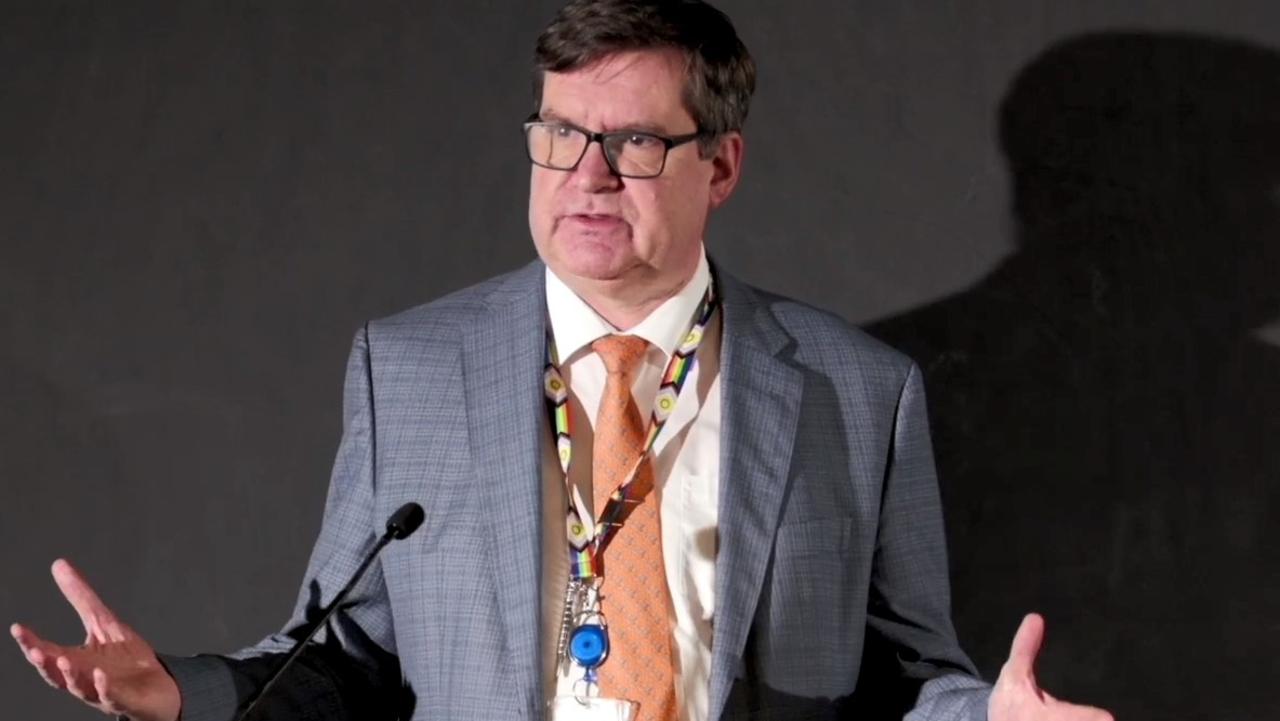Suburbs where ‘freedom’ protesters are from; probe into far-right influence
“Geo-fence” technology has unmasked Melbourne protesters, revealing surprising insights into the demonstrators’ lives.
“Freedom” protesters marching through the CBD each Saturday come from “far and wide” and are disproportionately “average Australians” or those “struggling to make ends meet”, according to new Roy Morgan data.
The independent Australian research company “geo-fenced” the area in front of Parliament House from 11am to 2.30pm on November 20 during the ‘freedom’ protest against the government’s controversial pandemic bill.
The devices located in this area were then profiled to determine where protesters had come from and what type of Australians they are.

A heat map produced by Roy Morgan reveals that outer suburbs had the heaviest concentration of protesters, such as South Morang, Tarneit, Cranbourne, Langwarrin, Werribee, Caroline Springs and Sunshine.
Roy Morgan chief executive Michele Levine said demonstrators came from “far and wide” to assemble in the city.
“Some protesters had ventured from various parts of country Victoria and as far away as Torquay, Ocean Grove, Geelong, Ballarat, Wonthaggi, Traralgon, Warragul, and out past Wallan to the north of Melbourne,” Ms Levine said.
Roy Morgan’s Helix tool is capable of segmenting consumers into targetable groups, ultimately determining what type of Australian they are.
Ms Levine said there were two types of Australians which were significantly over-represented among the protesters, dubbing them “hearth and home” and “fair go”.
“Hearth and home is the community closest to the ‘average Australian’, those people who embrace conventional family life and love to improve their homes,” she said.
“(While) fair go are those further down the socio-economic ladder who are struggling to make ends meet at the best of times and looking for a better deal in life.”
She said it should “perhaps not be a surprise” those already struggling are out on the streets protesting government vaccine mandates.
“They tend to be cynical about the motives of authority figures generally and have likely been hit hard by the restrictions imposed by the Covid pandemic.”
Nearly a quarter of the protesters could be classified as “average Australians”, with Ms Devine saying they have also been “hit hard by the pandemic”.

“Businesses in the retail, recreational and personal in which many of this cohort are employed have been forced to close and put under severe restrictions for the last 18 months – and the new pandemic legislation and vaccine mandates suggests they might have to get used to these restrictions rather than returning to a pre-Covid normality,” she said.
The three types of Australians significantly under-represented among the protesters included the “metrotechs”, who are “trend and tech focused”, and the “aspirationals”, who are “highly ambitious and culturally diverse up-and-comers”.
While more than a quarter of the protesters could be classified as “leading lifestyles”, who are “focused on success” and “big spenders”, they were represented in-line with the population level of this community.
There have been at least 19 people who attended the protests in November who have tested positive for Covid.

PROBE INTO FAR-RIGHT INFLUENCE
The state government will support the Victorian Greens’ bid to launch a parliamentary inquiry into the rise of far-right extremism.
Daniel Andrews has thrown his support behind a parliamentary inquiry that would examine the actions of far right extremists.
The Premier on Wednesday revealed that Victoria Police held serious concerns that the fringe group posed a “very significant threat” to the state.
The Victorian Greens’ bid to launch the inquiry into the rise of far-right extremism across the state has been stalled due to the lengthy debate surrounding the pandemic legislation.
Greens leader Samantha Ratnam was on Wednesday due to introduce a motion into the upper house that would probe the actions of the far-right nationalist movement and their links to the anti-vaccine conspiracy groups, including in the recent Melbourne riots.
The motion, which is all but expected to pass the Legislative Council, will require the Victorian Parliament’s legal and social issues committee to hand down its report by the end of May next year.
But it’s not yet known when Ms Ratnam will be able to introduce the motion, given this is the final Parliamentary sitting week of the year.

Despite that, the Premier said his government would support the push amid a spike in violence centred around the pandemic legislation.
“We’ve seen some very ugly behaviour in recent weeks,” Mr Andrews said on Wednesday.
“It’s not just a matter of concern for people who work in this building … It’s not just about those who are in public life, or who are public figures, this has the potential to impinge on the safety and security of all of us.
“They are very serious issues (and) … it has been a matter of concern for Victoria Police for quite some time.”
Greens leader Samantha Ratnam said the inquiry would also examine the methods of recruitment used by far-right groups as well as their “deliberate proliferation” of misinformation and conspiracy theories, including around the Covid-19 vaccine.
The motion, which is all but expected to pass the Legislative Council, will require the Victorian Parliament’s legal and social issues committee to hand down its report by the end of May next year.
A state government spokeswoman confirmed they would support the inquiry.
“This is a growing area of concern not just here, but right around the world,” she said.
“Everyone has a right to protest peacefully, but some of what we’ve seen in recent weeks is far from that – and far right, extremist, violent elements need to be called out, not courted.”

Ms Ratnam said the matter must be investigated immediately for the safety of all Victorians.
“The Greens have been concerned about the rise of far-right extremism for years now,” she said.
“I’m sure most Victorians were shocked when they saw photos of neo-Nazis openly gathering in the Grampians earlier this year. It was a visible warning of the growing threat of far-right extremism to the Victorian community.”
Ms Ratnam said it was “deeply disturbing” that extremist groups appeared to exploit people’s genuine fears and anxieties about the pandemic to spread misinformation and divide the community.
“The growing threat of these extremists and their influence must be investigated and as a community we need to understand the best ways of countering these movements, so that all Victorians can be kept safe, particularly multicultural communities,” she added.
It comes after placards of Daniel Andrews dressed as Adolf Hitler were paraded around recent protests against the state government’s proposed pandemic legislation.
Dr Dvir Abramovich, who is the chairman of the Anti-Defamation Commission, said he has been alarmed about the “coarsening of the debate and its hijacking by extremist forces”.
“History has taught us that such hateful discourse can and does create a climate that can lead to actual violence,” Dr Abramovich said.




